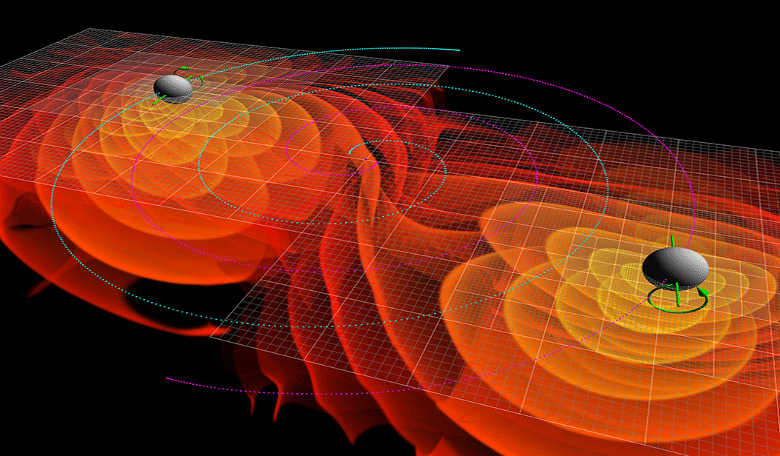The traditional view of a black hole horizon whereby nothing, not even light, escapes as it is sucked into the beckoning void has been turned on its head in recent decades. Theories from event horizon ‘fuzzballs’ to ‘firewalls’ have been suggested to overcome the lost information problem associated with our classical view of how black holes work. Now, by looking into the data collected from the recent gravitational wave events, a team of scientists have found evidence to suggest that black holes are indeed ‘hairy’ and therefore Einsteins theory of general relativity might break down at the edges of these phenological events after all.
According to Einstein’s general theory of relativity, stationary black holes are completely determined by just three observable parameters: their mass, charge, and angular momentum (their ‘spin’) and that an observer falling into an astrophysical black hole is not expected to experience anything dramatic as she or he crosses the event horizon – the boundary around a black hole beyond which radiation cannot escape; a sort of ‘point of no return’ as it were.
In this scenario, any physical information going into a black hole appears to be completely lost to the Universe. This became known as the ‘No Hair Theorem’ after a comment from John Wheeler – who coined the phrases ’black hole’ and ‘wormhole’ – who said that ‘black holes have no hair.’ Nonetheless, a hair-free black hole posed another problem as the loss of information contravened accepted laws of physics, sometimes referred to as the "law of conservation of information,” and the problem became known as the "black-hole information paradox.” But this paradox did not sit well with a number of eminent physicists at the time.
Einstein’s classical theory however does not take into account any quantum effects. By using quantum theory to describe the collapsing matter of a black hole, Stephen Hawking showed that black holes are not really black at all but emit sub-atomic particles known as ‘Hawking radiation.’ If no matter falls in, the energy lost through Hawking radiation would cause the black hole to reduce its mass and eventually it would evaporate. But the problem of what happened to data at the cusp of a black hole still remained and solutions were sought to overcome the persistent paradox.
To overcome the ‘no hair’ problem, it was suggested that black holes have ‘soft hair’ – low-energy quantum excitations that release information when the black hole evaporates.
Now, a team of scientists think they may have found a way to test whether the boundary to a black hole is fluffy – has hair and therefore some information can be retained – or is hair-free and information is lost forever as it crosses into the abyss. Their evidence is in the form of ‘echoes’ hidden in gravitational wave data, that thanks to the recent discoveries by the LIGO team has now been made accessible.
The team, whose lead author in the research paper is Jahed Abedi from Sharif University of Technology, Iran, suggest that if the surface of an event horizon was akin to a thermal membrane it would correspondingly act like a mirror, at least for some long wavelength perturbations, that would trap some of the gravitational waves as they bounced around the surface before they shot off into space.
According to the team's calculations, these echoes would have been encoded in the LIGO data at around 0.1, 0.2 and 0.3 seconds after the initial gravitational wave burst was detected, and this indeed appears to be the case.
To date, three black hole merger events that have produced gravitational waves have been captured by LIGO and this information appears in all three sets of data.
There is of a course a chance that these ‘echoes’ are in fact some kind of background noise and the team acknowledge that there is a 1 in 270 chance of this being the case, however with further detections by LIGO and other interferometers that are due for upgrade or construction, this will help prove, or disprove Einsteins predictions of black holes.
For further information on this research see; https://arxiv.org/pdf/1612.00266.pdf











